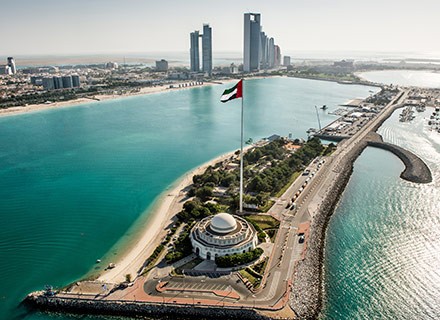The Abu Dhabi Commercial Bank (ADCB) is considering a potential merger with its domestic peers, Union National Bank (UNB) and Bank Al Hilal.
It is to be noted that talks are in the preliminary stage, as of now. ADCB has been clear in stating that it is possible that “they may not result in a transaction.”
If the talks are successful however, this three-way merger would establish an enterprise with a combined total assets of $115 billion and form the fifth largest lender in the MENA region(chart 1) after Qatar National Bank ($232 billion), First Abu Dhabi Bank ($188 billion), Emirates ($130 billion) and National Commercial Bank($121 billion).
All three banks will comprise of one mutual majority shareholder—Abu Dhabi Investment Council (ADIC). It currently owns 62.52% of ADCB, 50.01% of UNB and 100.00% of Bank Al Hilal (an investment which is not publicly listed). According to the official MENAFocus press release, this three-way merger could release “long-term value through economies of scale, synergies and overall restructuring for ADIC.” It mentions that such a proposition would be beneficial for ADIC as it would merely own a more profitable combined banking group after the implementation of cost restructuring—which in-turn would lead to surplus capital release, reduce the cost of funding and enhance the quality of the assets.
While the merger is not finalised yet and is still in its early states, the move is noted to be ‘credit positive’ for the UAE banking industry overall.
Moody’s investors service described that the merger would “increase banks’ pricing power, reduce pressure on their funding costs and increase their ability to meet sizeable investments.” The company noted that the merger could contribute to the consolidation of the “overbanked” UAE banking sector, which in turn will “increase banks pricing power, reduce pressure on their funding cost and ability to meet sizeable investments.”
‘Overbanking’ was also described in further detail in the official MENAFocus press release. It referred to the banking penetration which is measured both in terms of total assets held by the banks and the size of the population. The UAE banking sector has become by far the largest in the region, with $734 billion of assets held by banks as of end-2017—which was 194% of total GDP. Central Bank of the UAE (CBUAE) data revealed that there are 46 commercial banks operating in the UAE, with representative offices for a further 9 banks. This data did not include banks operating in the offshore vicinity of the Dubai International Financial Centre (DIFC).
These lenders were reported to cater for a population of only 10.5 million—which makes it comparable with 12 domestic banks and 15 foreign bank branches for nearly 33 million individuals in Saudi Arabia. The UAE comprises of a highly fragmented market separately, with few large banks (FAB, Emirates, NBD and ADCB) comprising of 53% of the total UAE banking sector, and many smaller lenders—something that makes it ripe for further consolidation.
UAE banks structurally are a diverse mix of conventional and Islamic entities—and are known for being both retail focused and corporate aligned in their stance. From a potential future merger perspective, this is known to offer value-added synergies. Merging of banks realises healthy synergies and in-turn potentially lowers the cost of funding through economies of scale and return on equities (ROEs). Better asset pricing discipline is also forecasted after banks merge with lower concentration risks in loan portfolios.
Overall, there is a large need for banking consolidation in the UAE, and Banks have a constant need to be better positioned to adapt to the rapidly changing operating environment. In addition, there are higher compliance costs with the implementation of new accounting standards. There is also the residual impact of VAT, which was implemented in January 2018, as well as the need for stronger corporate governance frameworks that also add to costs for the banks and increase pressure on small and medium-sized banks.
There are also regulatory amendments vis-à-vis capital market enhancements that include Base III requirements on capital adequacy and liquidity. With these, larger entities will overall be better equipped to handle global changes in the banking space over the long-term.
Moody’s also noted that banking competition in the UAE had intensified in recent years—with 60 banks being noted to serve a population of nine million. This meant that there was a drop in lending opportunities due to slowing economic and credit growth as a result of lower oil prices—and naturally leading to lenders being increasingly focused on high-quality borrowers at the expense of small-to-medium-sized enterprises—who generally have higher default rates.
Hence, a consolidated Banking system will positively impact the UAE’s currency, the dirham which is pegged to the US dollar. The reduction in competitive pressures and funding costs will lead to the reduction in the bank’s contracting net interest margins. Eventually, the banks will be able to increase their scale and revenue base—and will be able to improve their ability to meet the considerable investments related to compliance, digitalisation and new accounting standards such as IFRS9.a


